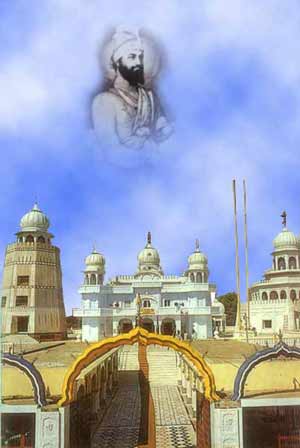 Patna is a city abounding in the relics of the bygone ages. Takht Harmandir Saheb is of religious importance to the Sikhs and is believed to be the place of birth of the last Sikh guru, Govind Singh. The Jalan Museum with a rare collection of curios. Sher Shah's mosque in the heart of the city is a splendid example of Afghan architecture. Among the numerous mosques in Patna, Begum Hajjam's mosque stands as the oldest. Saif Khan's Madarsa mosque, built in 1630, commands a magnificent view of the riverfront. Excavations at Kumhrar have yielded the remains of a Mauryan palace with sandstone pillars. One can still see Agam Kuan or the fathomless well, which was part of Ashoka's hell for prisoners. The famous Mahendru Ghat in today's Patna is the reminder of Mahendru (Ashoka's brother) who had sailed from this very Ghat to Ceylon in order to preach Buddhism. The Khuda Baksh Oriental library is a treasure trove of medieval manuscripts. The Patna Museum is noted for its collection of statues and a very old fossilized tree, 16 meters high. Close to the museum is the Gol Ghar, the 29 meter high beehive shaped granary constructed in 1786, following a terrible famine. The Patna Cemetery is a historically important European monument situated in what was once a Haveli (mansion) and is now a hospital. Some distance from the cemetery is the Padri ki Haveli, a Catholic church with an imposing façade.
Patna is a city abounding in the relics of the bygone ages. Takht Harmandir Saheb is of religious importance to the Sikhs and is believed to be the place of birth of the last Sikh guru, Govind Singh. The Jalan Museum with a rare collection of curios. Sher Shah's mosque in the heart of the city is a splendid example of Afghan architecture. Among the numerous mosques in Patna, Begum Hajjam's mosque stands as the oldest. Saif Khan's Madarsa mosque, built in 1630, commands a magnificent view of the riverfront. Excavations at Kumhrar have yielded the remains of a Mauryan palace with sandstone pillars. One can still see Agam Kuan or the fathomless well, which was part of Ashoka's hell for prisoners. The famous Mahendru Ghat in today's Patna is the reminder of Mahendru (Ashoka's brother) who had sailed from this very Ghat to Ceylon in order to preach Buddhism. The Khuda Baksh Oriental library is a treasure trove of medieval manuscripts. The Patna Museum is noted for its collection of statues and a very old fossilized tree, 16 meters high. Close to the museum is the Gol Ghar, the 29 meter high beehive shaped granary constructed in 1786, following a terrible famine. The Patna Cemetery is a historically important European monument situated in what was once a Haveli (mansion) and is now a hospital. Some distance from the cemetery is the Padri ki Haveli, a Catholic church with an imposing façade. | |
The remains of an ancient fort with massive cyclopean walls together with other sites amidst lush green surroundings of Rajgriha recreate the glory of the past. Until the discovery of Mohenjodaro and Harappa, this was believed to be the oldest architectural remains in India. The site is equally revered by the Jains, as their 24 Tirthankars are believed to have practiced austerities on the different hills of Rajgriha. The Jal Mandir at Pawapuri (the sinless city) marks the site where Vardhamana Mahavira (the 24th Tirthankar) was cremated while Parasnath hill is associated with the Nirvana of the 23rd Tirthankar, Sri Parsvanath.
Nalanda , in the heart of Bihar, stands as the world's most ancient seat of learning. The ruins confirm the university's ability to cater to the needs of 10,000 students until the 12th century AD. The excavations have yielded numerous monasteries, temples, stupas and statues of Buddha. The Vikramshila University was an important institution of Tantric Buddhism and there was a regular exchange of teachers between the two universities.
The picturesque mausoleum of Sher Shah at Sasaram, outdoes the Taj Mahal in size, with a dome that surpasses it by 13 feet. Also at Sasaram we find the mausoleum of Sher Shah's father, Hasan Shah Sur. A few hours' drive from Sasaram takes one to the Rohtasgarh fort. In the words of Abul Fazal it is "a well defended paradise (fort) with no equal for strength and solidity." The fort, 28 miles in circumference, is a perfect platform for eco-tourism projects.

1 comment:
Thanks, It is best formation for western part of bihar <a href="http://www.sasaramdihra.blogspot.com" title="sasaram>sasaram</a>
Post a Comment